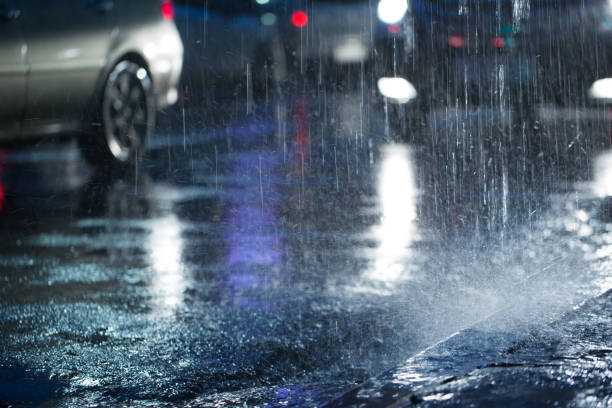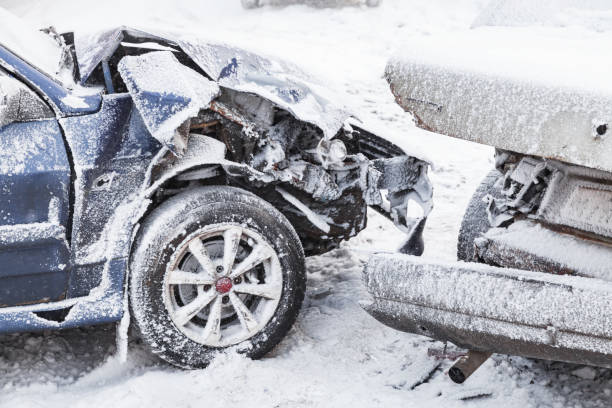Driving In Bad Weather – Pennsylvania

Brushing up on safe driving techniques is a great idea for all drivers, regardless of your level of driving experience. Some driving rules apply to all bad weather related conditions while others are tailored to a specific type of weather. Below we have compiled some tips and precautions for driving in inclement weather.

Driving in Ice and Snow
Turn slowly. When approaching a turn, whether it is a curve in the road or turning at an intersection, do not accelerate. Brake slightly as you turn so that you don’t spin out of control.
Accelerate slowly. Icy, slippery roads make tires spin faster. If you are pressing the gas too fast, it can cause the tires to spin very fast, digging themselves into the snow and ice.
Watch for black ice. A thin layer of translucent ice, or black ice, is hard to spot. When you hit black ice, you are more likely to lose control of your car by “spinning out”. Watch carefully for slippery-looking spots on the road especially when the temperature has dipped below 32 degrees Fahrenheit. Black ice generally accumulates first on bridges, ramps, and overpasses.

Driving in the Rain
Use your headlights, not your daytime running lights. Not only will this help you see better in the darker weather, but it will help other drivers spot you more easily.
Stay in the middle of the road. On a multi-lane road, avoid staying in the far-right lane. This is where water tends to pool, covering the road’s edge, potholes, and other hazards.
Avoid puddles. Again, water pooling can cover dangerous parts of the road, such as potholes and debris. Hydroplaning is also a risk when driving in pooled water, causing you to lose control of your vehicle.
Use your windshield wipers. Your windshield wipers will clear water quickly and help you see better. Make sure your wiper blades are in working order.
Pull over if it’s bad. If you can’t see cars in front of you or are having difficulty controlling your vehicle, simply pull over and wait for the rain to slow down.

Driving Through Fog
Use low beam headlights. High beam headlights won’t help you see much in the fog, only low beams will improve visibility. Using regular or high beam headlights will cause the light to reflect off the water in the air making it difficult to see. This is taught in most basic driver’s courses but driving in fog isn’t a common driving condition for most new drivers, requiring an extra reminder.
Don’t pass. Staying in your lane is trickier in the fog, but more important because you cannot see cars coming in the other direction.
Signal longer. Another hazard of decreased visibility comes when a car is turning, and other drivers cannot see well enough. To help decrease the risks, leave your turn signal on longer to give ample notice of your intentions.
General guidelines and best practices for driving in any inclement weather
Slow down. Slow down and use extreme caution if you are driving in weather you are unfamiliar with.
Leave extra room between you and the next vehicle. Not leaving enough space in front of your car can cause a car crash. From less visibility to bad weather, you never know when you will need to stop quickly. Leaving room in front of you gives extra space and warning before hitting the brakes.
Plan accordingly
Leave with plenty of time to reach your destination so you won’t stress about hurrying to get there on time. Also, let others know you will be on the road and which route you are taking in case you end up needing help.

You’ve just found yourself in a car accident. You’re in shock, confused, and possibly injured. What do you do now?
Call 911. You should always, first and foremost, call for help.
Take pictures. If your injuries allow and if it feels safe, take pictures of the scene of the accident and the placement of the vehicles.
Secure witnesses. If available, secure the names, phone numbers, and addresses of any witnesses who may have viewed the accident.
Contact us. As soon as you are able, call your personal injury lawyer. We are always available to take your call, accept your email, text, etc.
Seek treatment for your injuries. No matter how good your personal injury attorney is, without appropriate documentation of your injuries, your case loses significant value.
Talk to Us Today
If you have been injured in a vehicle accident, you need a skilled and seasoned personal injury lawyer on your side.
Contact us now to learn more about how we can help in a vehicle accident case. There is no risk or obligation. We charge you no legal fees unless we recover money damages for you. Call us today at 215-567-7955 for a free consultation, and start getting your life back.


